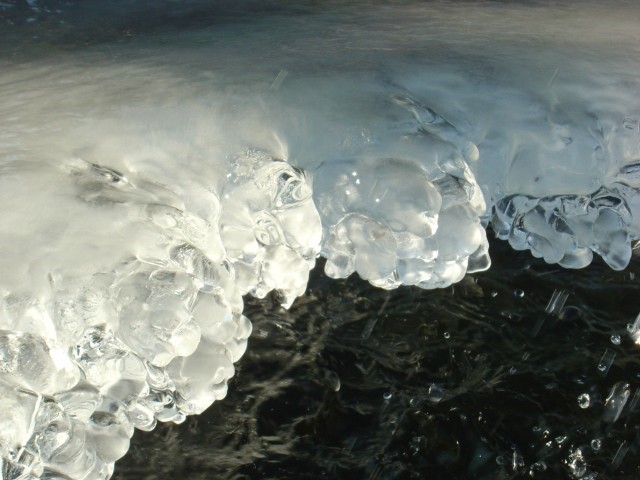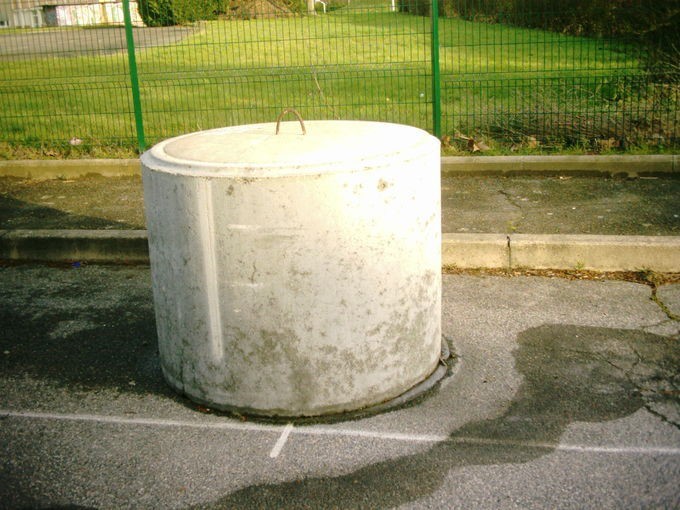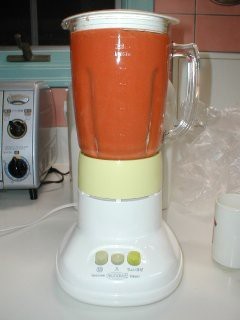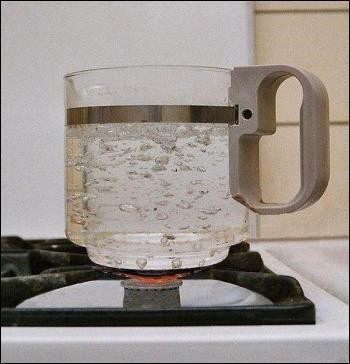18 Physical and Chemical Properties of Matter
LumenLearning
Physical and Chemical Properties of Matter
Properties of matter can be classified as either extensive or intensive and as either physical or chemical.
LEARNING OBJECTIVES
Recognize the difference between physical and chemical, and intensive and extensive, properties.
KEY TAKEAWAYS
Key Points
- All properties of matter are either physical or chemical properties, and physical properties are either intensive or extensive.
- Extensive properties, such as mass and volume, depend on the amount of matter being measured.
- Intensive properties, such as density and color, do not depend on the amount of the substance present.
- Physical properties can be measured without changing a substance’s chemical identity.
- Chemical properties can be measured only by changing a substance’s chemical identity.
Key Terms
- intensive property: Any characteristic of matter that does not depend on the amount of the substance present.
- extensive property: Any characteristic of matter that depends on the amount of matter being measured.
- physical property: Any characteristic that can be determined without changing the substance’s chemical identity.
- chemical property: Any characteristic that can be determined only by changing a substance’s molecular structure.
All properties of matter are either extensive or intensive and either physical or chemical. Extensive properties, such as mass and volume, depend on the amount of matter that is being measured. Intensive properties, such as density and color, do not depend on the amount of matter. Both extensive and intensive properties are physical properties, which means they can be measured without changing the substance’s chemical identity. For example, the freezing point of a substance is a physical property: when water freezes, it’s still water ([latex]\text{H}_2\text{O}[/latex])—it’s just in a different physical state.

A chemical property, meanwhile, is any of a material’s properties that becomes evident during a chemical reaction, that is, any quality that can be established only by changing a substance’s chemical identity. Chemical properties cannot be determined just by viewing or touching the substance; the substance’s internal structure must be affected for its chemical properties to be investigated.
Physical Properties
Physical properties are properties that can be measured or observed without changing the chemical nature of the substance. Some examples of physical properties are:
- color (intensive)
- density (intensive)
- volume (extensive)
- mass (extensive)
- boiling point (intensive): the temperature at which a substance boils
- melting point (intensive): the temperature at which a substance melts

Physical properties: Matter has mass and volume, as demonstrated by this concrete block. You can observe its mass by feeling how heavy it is when you try to pick it up; you can observe its volume by looking at it and noticing its size. Mass and volume are both examples of extensive physical properties.
Chemical Properties
Remember, the definition of a chemical property is that measuring that property must lead to a change in the substance’s chemical structure. Here are several examples of chemical properties:
- Heat of combustion is the energy released when a compound undergoes complete combustion (burning) with oxygen. The symbol for the heat of combustion is [latex]\Delta \text{H}_\text{c}[/latex].
- Chemical stability refers to whether a compound will react with water or air (chemically stable substances will not react). Hydrolysis and oxidation are two such reactions and are both chemical changes.
- Flammability refers to whether a compound will burn when exposed to flame. Again, burning is a chemical reaction—commonly a high-temperature reaction in the presence of oxygen.
- The preferred oxidation state is the lowest-energy oxidation state that a metal will undergo reactions in order to achieve (if another element is present to accept or donate electrons).
Physical and Chemical Changes to Matter
There are two types of change in matter: physical change and chemical change.
LEARNING OBJECTIVES
Identify the key features of physical and chemical changes.
KEY TAKEAWAYS
Key Points
- Physical changes only change the appearance of a substance, not its chemical composition.
- Chemical changes cause a substance to change into an entirely new substance with a new chemical formula.
- Chemical changes are also known as chemical reactions. The “ingredients” of a reaction are called reactants, and the end results are called products.
Key Terms
- chemical change: A process that causes a substance to change into a new substance with a new chemical formula.
- chemical reaction: A process involving the breaking or making of interatomic bonds and the transformation of a substance (or substances) into another.
- physical change: A process that does not cause a substance to become a fundamentally different substance.
There are two types of change in matter: physical change and chemical change. As the names suggest, a physical change affects a substance’s physical properties, and a chemical change affects its chemical properties. Many physical changes are reversible (such as heating and cooling), whereas chemical changes are often irreversible or only reversible with an additional chemical change.
"Physical & Chemical Changes": This video describes physical and chemical changes in matter.

Physical Changes
Another way to think about this is that a physical change does not cause a substance to become a fundamentally different substance, but a chemical change causes a substance to change into something chemically new. Blending a smoothie, for example, involves two physical changes: the change in shape of each fruit and the mixing together of many different pieces of fruit. Because none of the chemicals in the smoothie components are changed during blending (the water and vitamins from the fruit are unchanged, for example), we know that no chemical changes are involved.
Cutting, tearing, shattering, grinding, and mixing are further types of physical changes because they change the form but not the composition of a material. For example, mixing salt and pepper creates a new substance without changing the chemical makeup of either component.
Phase changes are changes that occur when substances are melted, frozen, boiled, condensed, sublimated, or deposited. They are also physical changes because they do not change the nature of the substance.

Chemical Changes
Chemical changes are also known as chemical reactions. The “ingredients” of a reaction are called the reactants, and the end results are called the products. The change from reactants to products is signified by an arrow:
[latex]\text{Reactants }\rightarrow\text{ Products}[/latex]
The formation of gas bubbles is often the result of a chemical change (except in the case of boiling, which is a physical change). A chemical change might also result in the formation of a precipitate, such as the appearance of a cloudy material when dissolved substances are mixed.
Rotting, burning, cooking, and rusting are all further types of chemical changes because they produce substances that are entirely new chemical compounds. For example, burned wood becomes ash, carbon dioxide, and water. When exposed to water, iron becomes a mixture of several hydrated iron oxides and hydroxides. Yeast carries out fermentation to produce alcohol from sugar.
An unexpected color change or release of odor also often indicates a chemical change. For example, the color of the element chromium is determined by its oxidation state; a single chromium compound will only change color if it undergoes an oxidation or reduction reaction. The heat from cooking an egg changes the interactions and shapes of the proteins in the egg white, thereby changing its molecular structure and converting the egg white from translucent to opaque.
The best way to be completely certain whether a change is physical or chemical is to perform chemical analyses, such as mass spectroscopy, on the substance to determine its composition before and after a reaction.
LICENSES AND ATTRIBUTIONS
CC LICENSED CONTENT, SHARED PREVIOUSLY
- Curation and Revision. Provided by: Boundless.com. License: CC BY-SA: Attribution-ShareAlike
CC LICENSED CONTENT, SPECIFIC ATTRIBUTION
- Chemical property. Provided by: Wikipedia. Located at: http://en.wikipedia.org/wiki/Chemical_property. License: CC BY-SA: Attribution-ShareAlike
- General Chemistry/"Properties of Matter"/"Basic Properties of Matter." Provided by: Wikibooks. Located at: http://en.wikibooks.org/wiki/General_Chemistry/Properties_of_Matter/Basic_Properties_of_Matter. License: CC BY-SA: Attribution-ShareAlike
- Boundless. Provided by: Boundless Learning. Located at: http://www.boundless.com//chemistry/definition/extensive-property. License: CC BY-SA: Attribution-ShareAlike
- matter. Provided by: Wiktionary. Located at: http://en.wiktionary.org/wiki/matter. License: CC BY-SA: Attribution-ShareAlike
- Boundless. Provided by: Boundless Learning. Located at: http://www.boundless.com//chemistry/definition/chemical-property. License: CC BY-SA: Attribution-ShareAlike
- mass. Provided by: Wiktionary. Located at: http://en.wiktionary.org/wiki/mass. License: CC BY-SA: Attribution-ShareAlike
- volume. Provided by: Wiktionary. Located at: http://en.wiktionary.org/wiki/volume. License: CC BY-SA: Attribution-ShareAlike
- Boundless. Provided by: Boundless Learning. Located at: http://www.boundless.com//chemistry/definition/intensive-property. License: CC BY-SA: Attribution-ShareAlike
- mole. Provided by: Wiktionary. Located at: http://en.wiktionary.org/wiki/mole. License: CC BY-SA: Attribution-ShareAlike
- Concrete block. Provided by: Wikimedia. Located at: http://commons.wikimedia.org/wiki/File:Concrete_block.JPG. License: CC BY-SA: Attribution-ShareAlike
- Icewithwater. Provided by: Wikimedia. Located at: http://commons.wikimedia.org/wiki/File:Icewithwater.JPG. License: CC BY-SA: Attribution-ShareAlike
- General Chemistry/"Properties of Matter"/"Changes in Matter." Provided by: Wikibooks. Located at: http://en.wikibooks.org/wiki/General_Chemistry/Properties_of_Matter/Changes_in_Matter. License: CC BY-SA: Attribution-ShareAlike
- product. Provided by: Wiktionary. Located at: http://en.wiktionary.org/wiki/product. License: CC BY-SA: Attribution-ShareAlike
- reactant. Provided by: Wiktionary. Located at: http://en.wiktionary.org/wiki/reactant. License: CC BY-SA: Attribution-ShareAlike
- chemical reaction. Provided by: Wiktionary. Located at: http://en.wiktionary.org/wiki/chemical_reaction. License: CC BY-SA: Attribution-ShareAlike
- Concrete block. Provided by: Wikimedia. Located at: http://commons.wikimedia.org/wiki/File:Concrete_block.JPG. License: CC BY-SA: Attribution-ShareAlike
- Icewithwater. Provided by: Wikimedia. Located at: http://commons.wikimedia.org/wiki/File:Icewithwater.JPG. License: CC BY-SA: Attribution-ShareAlike
- General Chemistry/"Properties of Matter"/"Changes in Matter." Provided by: Wikibooks. Located at: http://en.wikibooks.org/wiki/General_Chemistry/Properties_of_Matter/Changes_in_Matter. License: CC BY-SA: Attribution-ShareAlike
- "Physical & Chemical Changes" – YouTube. Located at: http://www.youtube.com/watch?v=y3jzixVM9GA. License: Public Domain: No Known Copyright. License Terms: Standard YouTube license
- Kochendes wasser02. Provided by: Wikipedia. Located at: http://en.wikipedia.org/wiki/File:Kochendes_wasser02.jpg. License: CC BY-SA: Attribution-ShareAlike
This chapter is an adaptation of the chapter "Physical and Chemical Properties of Matter" in Boundless Chemistry by LumenLearning and is licensed under a CC BY-SA 4.0 license.
Any characteristic of matter that does not depend on the amount of the substance present.
Any characteristic of matter that depends on the amount of matter being measured.
Any characteristic that can be determined without changing the substance’s chemical identity.
Any characteristic that can be determined only by changing a substance’s molecular structure.
A process that causes a substance to change into a new substance with a new chemical formula.
A process involving the breaking or making of interatomic bonds and the transformation of a substance (or substances) into another.
A process that does not cause a substance to become a fundamentally different substance.

